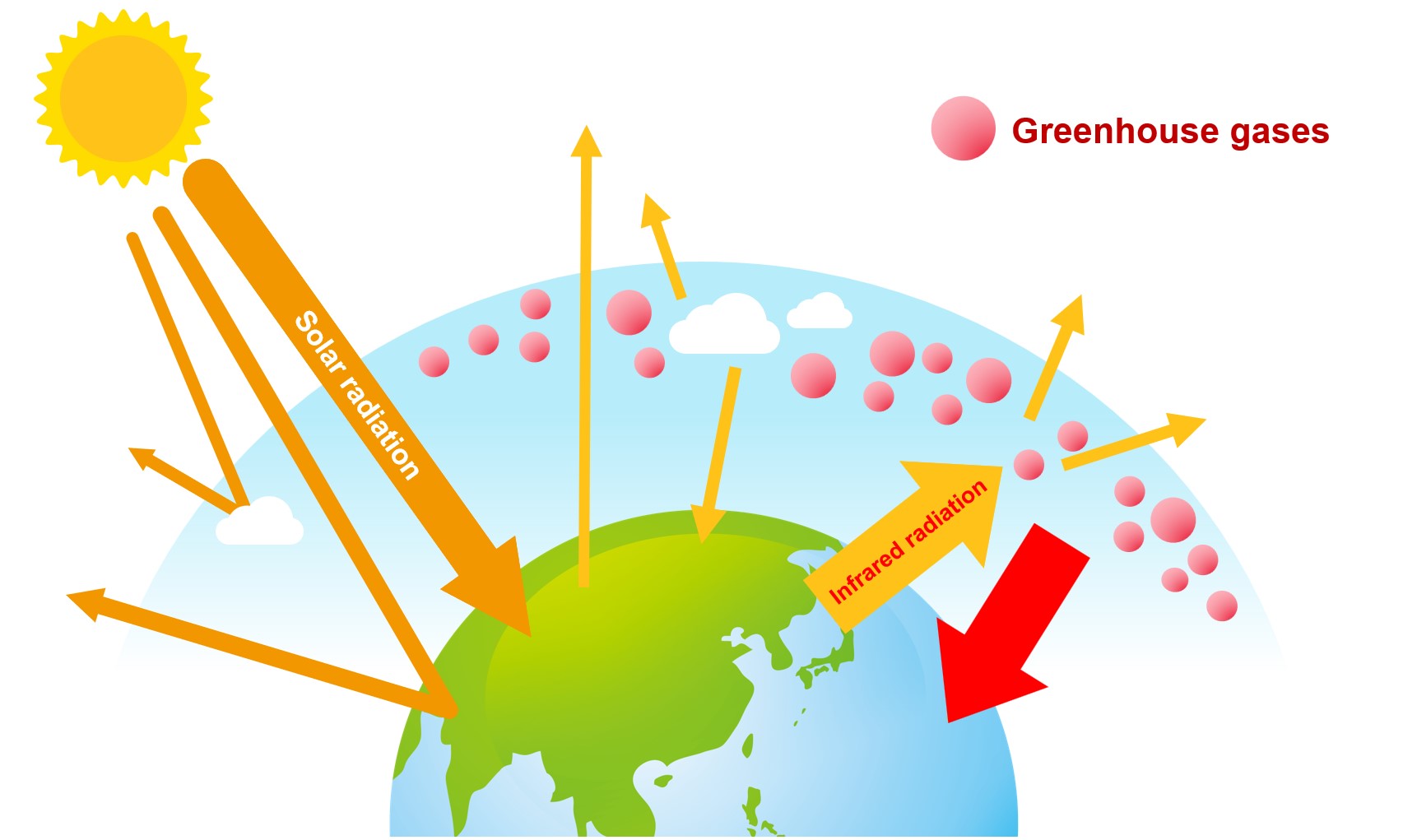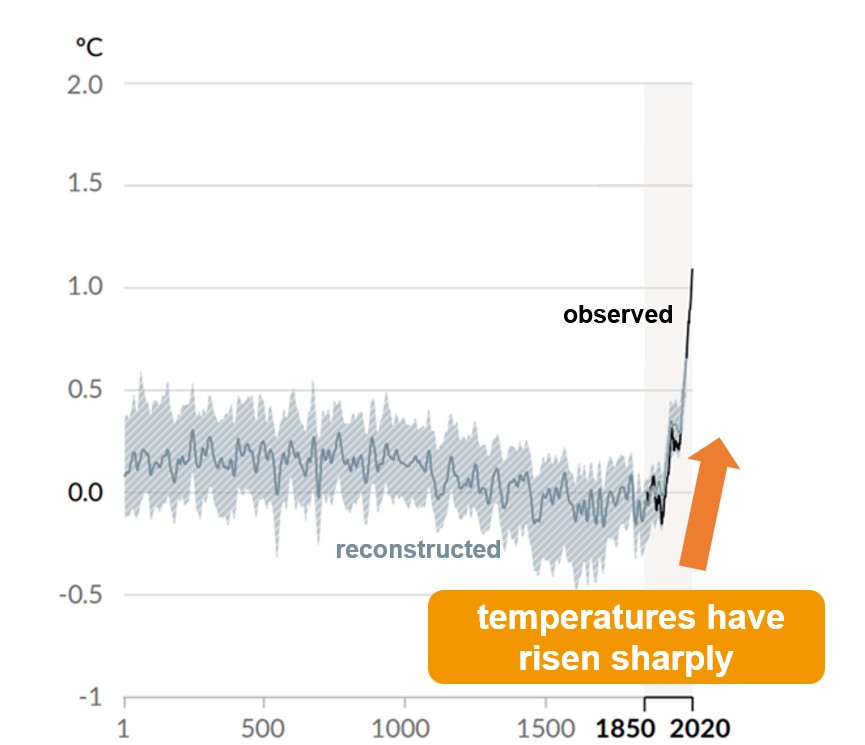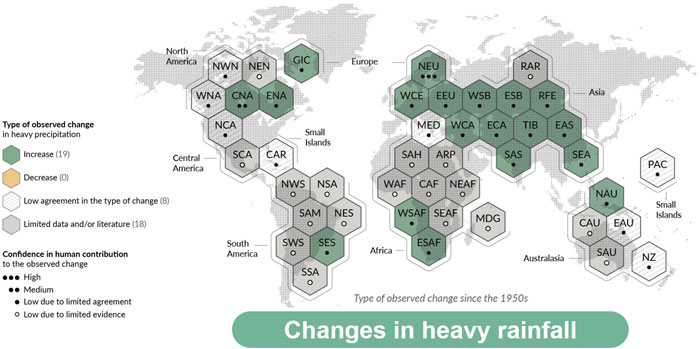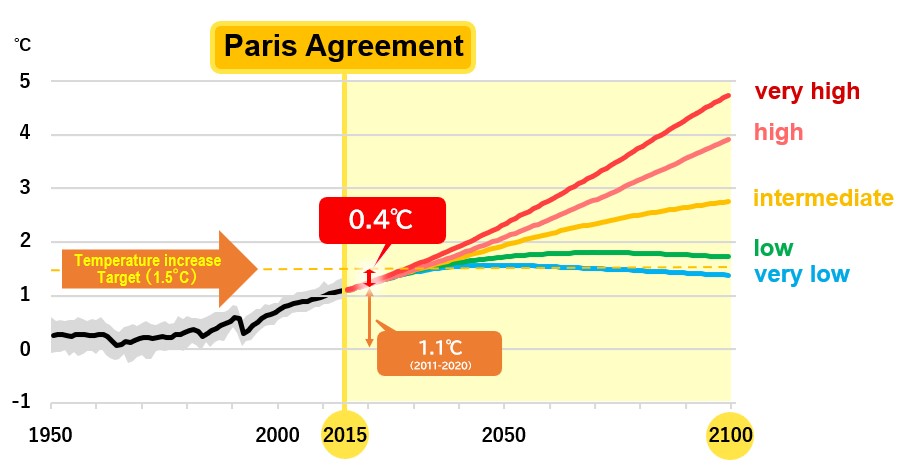Global Warming・Climate Change
What is Global Warming?
More than half of the energy that the Earth receives from the sun is emitted from the Earth’s surface into the atmosphere. Greenhouse gases (water vapor, carbon dioxide, nitrogen monoxide, methane, and chlorofluorocarbons) in the atmosphere absorb the energy from the earth, from which some are returned to the earth. This is called the greenhouse effect. Without greenhouse effect, the Earth’s surface temperature would be -19°C, but with the greenhouse effect, it is maintained at about 14°C.
In recent years, however, more heat has been returned to the earth because of the large amount of carbon dioxide and other anthropogenic greenhouse gases that have been emitted into the atmosphere.


As a result, global temperatures have risen dramatically since around 1850, when the Industrial Revolution began.
Global average temperature change
(1-2020)

Source:IPCC (2021)
Climate fluctuations happen even under natural conditions, but contemporary temperature rise has been well beyond the natural fluctuations. This is called global warming. Technically speaking,global warming is defined as the phenomenon of rising global temperatures in addition to natural fluctuations.
Global average temperature change
(1850-2020)

Source:IPCC (2021)
What is Climate Change?
Various changes in climate, such as an increase in extreme weather events and heavy rainfall, have also been observed around the world. Heat waves and other heat extremes have increased in frequency and intensity since the 1950s. In addition, an increase in heavy rainfall has been observed in many parts of the world.


Source: Based on IPCC (2021)
Changes in climate caused by increases in greenhouse gases are referred to as climate change. Global warming and climate change are often used interchangeably, but “climate change” is preferably used among scientists, as a wide range of changes are increasingly recognized in recent years.
Climate change affects many aspects of human life, including health impacts such as increases in heat strokes and spreads of infectious diseases, availability and amounts of food products, and various ecosystems worldwid.
Future temperature changes
During the Paris Agreement in 2015, countries around the world agreed to pursue efforts to limit the temperature increase to 1.5℃ above pre-industrial levels by 2100. However, as of 2020, global temperatures have already risen by 1.1℃ and we are thus only 0.4℃ away from this target.
Climate Change: Future Changes
(Compare with pre-industrial revolution)
Global surface temperature change relative to 1850-1900

Source: Based on IPCC (2023)
According to recent studies, an average temperature increase of 4.4℃ is projected to occur by 2100 if the society choses the world with high economic development. To reduce the temperature rise to below 1.5℃, we will need to take an immediate and drastic measures against climate change.
According to a recent report by UNEP (2022), if countries around the world continue with current measures, the global average temperature will increase of 2.8°C by 2100. Even if countries meet the targets declared under the Paris Agreement, the it is expected to rise between 2.4°C and 2.6°C. To keep the rise below 1.5°C, significant reductions over the current targets are required.
(Written by: Yuko Onishi)
References
The intergovernmental Panel on Climate Change (IPCC), 2021, Climate Change 2021: The Physical Science Basis.
https://www.ipcc.ch/report/ar6/wg1/
IPCC, 2023, Summary for Policymakers, Climate Change 2023: Synthesis Report.
https://www.ipcc.ch/report/ar6/syr/downloads/report/IPCC_AR6_SYR_SPM.pdf
The United Nations Environment Programme (UNEP) , 2022, Annual Report 2022.
https://www.unep.org/resources/annual-report-2022?gclid=EAIaIQobChMI-qSOn8u1gQMV2tUWBR2fiQXcEAAYASAAEgIp3_D_BwE




